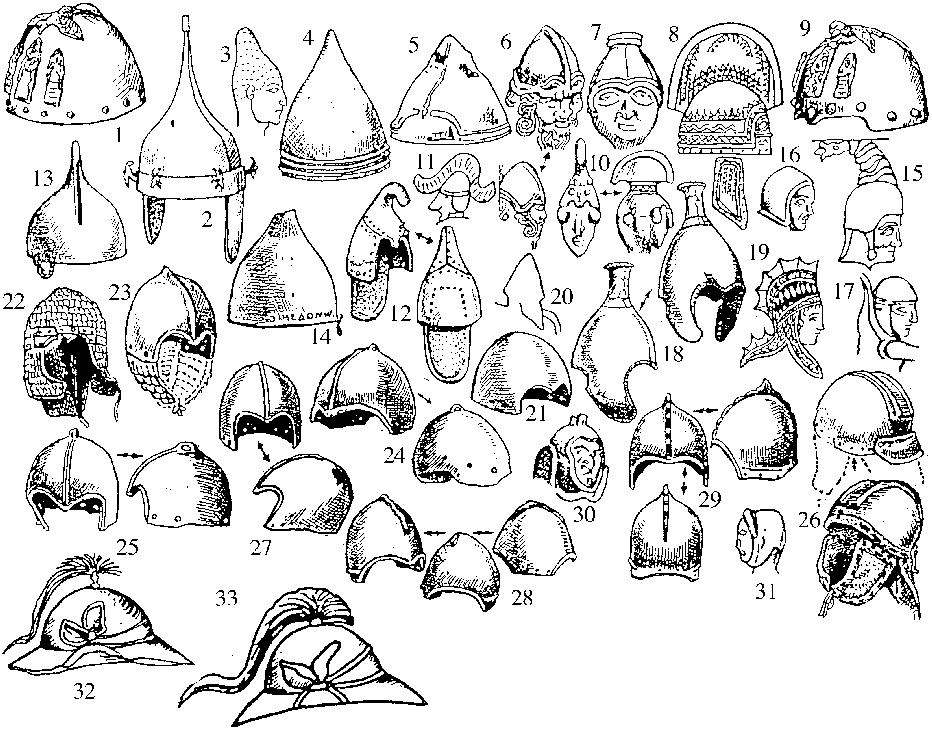You have an area that supported lots of small cities, was washed over by many different cultures and religions (i.e. ruins to explore), lots of rugged wilderness (excellent for swords & sandals - conan sort of adventure) filled with manticores, Chinese dragons, Mongolian death worms, flumphs (hey, why not?) - what's not to love?
 |
| Is there a classic D&D/AD&D module you couldn't shoehorn in here? And Samarkand! You have freaking Samarkand! |
 |
| Bactrian camels - double-humpers! |
 |
| Scale mail for the win! |
 |
| Cataphracts - 99% cooler name than "knight" |
 |
| Pointy steel hats and chainmail face masks! |
You want variety?
 |
| Think of the character variety that is possible here! |
 |
| Finally, monks are just as much at home here as every other class in the game! |
 |
| Exotic headgear - check! |
 |
| Kick ass helmets |
You want treasure?
 |
| A Gold Stater - I may be prejudiced, but what a great name for a coin! |
 |
| Silver pieces from Gandhara |
 |
| Gold earrings depicting men with dragons |
 |
| Stone plate |
You want exotic gods and goddesses?
 |
| Athena (LG) of the Olympians |
 |
| Buddha (LN) |
| Hercules (CG) |
 |
| A whole new way to do Caves of Chaos |
 |
| Atlas |
 |
| Another bodhisattva, but who says it can't be Vecna? |






Turn that map upside down, change the names, instant fantasy land!
ReplyDeleteI remember seeing a map of that area in the library in college, not recognizing where the hell it was on the globe, and thinking it was some fantasy kingdom.
ReplyDeleteHelmet 15 is evidence of the fell Purple Worm Cult in historical times.
I've played a short PbP campaign set in that using Iron Heroes, and central Asia is a huge influence on the Dawnlands.
ReplyDeleteIt's what I've been saying all along. Carcosa Wacky Races has been taking place just off the north edge of that first map, somewhere around Almaty.
ReplyDeleteIf you get the chance to see Yuri Bregel's wildly expensive Historical Atlas of Central Asia, it's wonderfully vague but extremely suggestive of the sheer weight of empires and whatnot that have as you say washed over the region. I call this DnD land proper.
Also, of course, it's a big chunk of the Conanverse, right down to bloopers like calling a sea "Vilayet" (Russian, meaning "region" or "governorate").
Although he focuses moreso on the 19th century, Peter Hopkirk's non-fiction books on the region are great inspiration. Copplestone. astings website has some really good pdf on the cultures of the area, although they to are focused primarily on the 19th century. And lastly I would like to recommend Michael Chabon's Gentlemen of The Road.
ReplyDeleteMy current D&D game is set in a trade route steppe city called Yam; it's actually Samarkand sometime in the distant post-historical future aeons.
ReplyDeleteNaw, Vilayet was a Russian corruption of an old Hyborean Age word for "large inland sea".
ReplyDeleteWho all is in that last pick with Hercules? Where did you find that? I mean, was there a real place where folks were telling stories of what looks like the Buddha or a Hindu god along side Hercules?
ReplyDeleteAwesome.
Yes sir - Buddha and Hercules. Bactria was where Greek philisophy merged with what would later be called "Little Wheel" Buddhism and became the "Great Wheel" Buddhism that made its way to China and Japan.
DeleteWah wow. Mind. Blown.
DeleteI mean in an abstract sense I knew all these little interactions were happening, but I had never seen actual physical artifacts of it. Where did you FIND that pic?
(Still "Crooked Rook" here. Reorganizing my web foot print.)
A secret little website I like to call ... Wikipedia
DeleteIt's also the place where people started depicting the Buddha as a physical entity instead of as a present absence, meaning the Buddhas of Bamiyan in their current state might be seen as an artistic restoration.
DeleteI love hearing about that little part of the world, and am glad that others have seized upon the realization that it is perfect for D&D campaigns. Robert E Howard set some stories in that area as well, and in the past the Greco-Bactrian Kingdom was called the land of a thousand shining cities. And look at the history! Medes, Persians, Greeks, Buddhists, Christians, Nestorians, Genghis Khan, Tamerlane, and the various warlords of the intervening centuries? More than enough for a lifetime of games.
ReplyDeleteWhat little I know is that Heracles got parsed as Vajrapani, which is sort of the kick-ass-and-chew-bubble-gum aspect of the Buddha, and eventually resurfaces as the patron of Xiaolin. The whole thing is an alignment mess, but so is the alignment system.
ReplyDelete